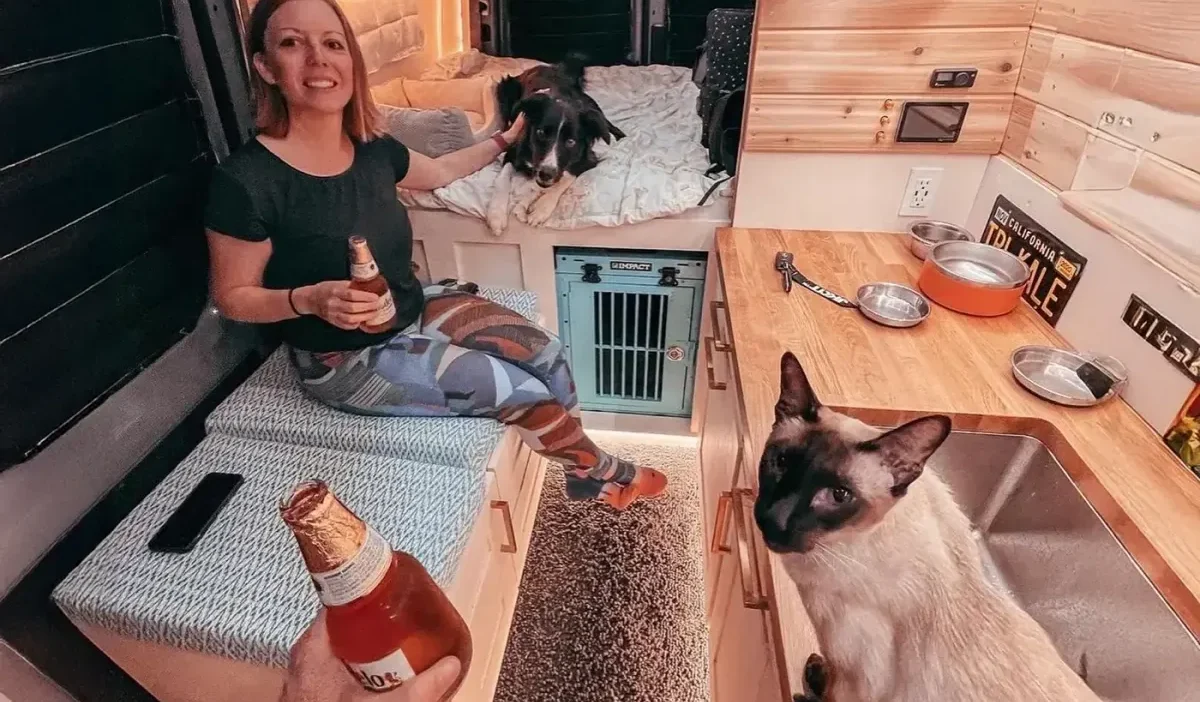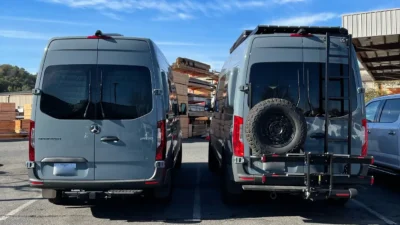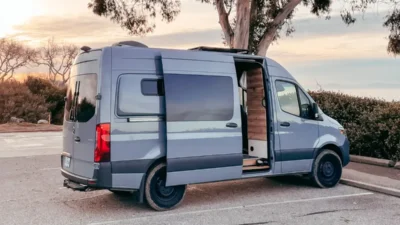One of the many great things about van life is how flexible it can be. You don’t need to go all-in and sell everything to enjoy life on the road. At the same time, if you’re craving a total lifestyle overhaul, full-time van life can offer that too.
In this part of our Van Life guide, we’ll walk through the differences between full-time and part-time van living, and help you figure out which one might fit your goals, personality, and season of life.
Van Life Guide Table of Contents
- Is this lifestyle really for you?
- Choosing or building your camper van
- How much does van life cost — and can it save you money?
- Full-time vs. part-time van living ← You are here
- The unglamorous stuff: parking, showers, toilets & more
- Finding community and staying connected
What does full-time van life look like?
Full-time van life means your van is your home. You live in it, sleep in it, and travel with it year-round.
This version of van life is ideal if you’re looking for a complete change of pace. It has the potential to untether you from leases, utilities, and stuff you don’t really need.
You might be:
- Working remotely full-time while traveling
- Exploring national parks and backroads as your “backyard”
- Living seasonally and moving with the weather
- Downsizing your life to live more intentionally
Pros include:
- Total freedom to go wherever, whenever
- No rent or mortgage tying you down
- Incredible access to nature and travel experiences
- Often cheaper than traditional living (if you keep things simple)
Cons include:
- Constant planning: where to park, get water, do laundry
- Loneliness and isolation can creep in
- It can get tiring if you’re always on the move
- Repairs or breakdowns can leave you “homeless” temporarily
What does part-time van life look like?
Part-time van life means you have a home base but you use your van for weekend getaways (aka ‘weekend warriors’), seasonal travel, or extended road trips throughout the year.
It’s a great way to enjoy the freedom and adventure of van life, without giving up everything about traditional living.
You might be:
- Working seasonally and traveling during the off-season
- Holding down a stable job and using the van to escape on weekends
- Taking long sabbaticals or summer road trips
- Balancing van life with family, school, or other commitments
Pros include:
- More sustainable for many people long-term
- Easier to take breaks and reset when needed
- You can leave some of the van life “chores” behind for a while
- Reduces pressure to make van life your full identity
Cons include:
- You may need to store your van between trips
- It’s harder to justify the cost of a high-end build if you’re only using it part-time
- You’ll still face some of the same planning/maintenance challenges as full-timers
Which one is right for you?
There’s no perfect formula; it depends on your current lifestyle, financial flexibility, and goals.
Ask yourself:
- Am I looking for a full reset, or just more adventure and time outdoors?
- Do I need a home base (for work, mail delivery, family, pets, etc)?
- How much time and energy do I want to commit to planning and logistics?
- Is this something I want to try for a few months, or longer term?
You don’t have to choose forever
Many van lifers start part-time and go full-time once they fall in love with the lifestyle. Others go all-in, then scale it back once they’ve scratched the itch or hit a natural stopping point.
Van life doesn’t have to be “everything or nothing.” It’s your journey, so shape it in a way that feels exciting and sustainable for you.
What’s next?
In Part 5, we’re getting into the real talk: how to live comfortably on the road. From where to park, shower, and use the bathroom, to staying connected and finding places to sleep—we’ll share all the practical stuff you need to know.
👉 Head to Part 5: The unglamorous stuff — parking, showers, toilets & more



